Misc
Horror 101: Disney’s ZOMBIES Franchise From A to Zed
The ZOMBIES movies (2018’s ZOMBIES, 2020’s ZOMBIES 2, and 2022’s ZOMBIES 3) all take place in a town called Seabrook, populated by both humans and zombies, where Zombietown is separated from the rest of the population by an enormous wall. You may notice that this sounds a little like apartheid. The franchise begins on the day when zombie teens are finally allowed to attend the human high school. You may notice that that sounds a lot like American school reintegration. You may also notice that all of this sounds like a variety of other race-related social issues. You’re great at noticing things. These movies have a lot of progressive social metaphors on their minds. In fact, they have so much on their minds that the overstuffed central metaphor immediately shoots out of their grasp like an over-lathered bar of soap.

As far as Disney Channel original musical franchises go, I will eat my keyboard if you’ve never heard of High School Musical. Descendants is also big enough that you may have heard of those misbegotten movies and the multimedia franchise they spawned. And the Teen Beach Movie duology has maybe come across your desk if you were really digging into the history of Ross Lynch after seeing him shirtless on Instagram. But one of the most exciting Disney Channel musical franchises, ZOMBIES, is relatively unknown among modern childless adults, possibly due to its more recent vintage. I’m here to fix that today.
A quick note: The titles of the movies are technically stylized as Z-O-M-B-I-E-S, but I wouldn’t want to torture my poor fingers by sticking to that bit of grammatical nonsense throughout the entire piece.

What On Earth Are the ZOMBIES Movies?
The ZOMBIES movies (2018’s ZOMBIES, 2020’s ZOMBIES 2, and 2022’s ZOMBIES 3) all take place in a town called Seabrook, populated by both humans and zombies, where Zombietown is separated from the rest of the population by an enormous wall. You may notice that this sounds a little like apartheid. The franchise begins on the day when zombie teens are finally allowed to attend the human high school. You may notice that that sounds a lot like American school reintegration. You may also notice that all of this sounds like a variety of other race-related social issues. You’re great at noticing things. These movies have a lot of progressive social metaphors on their minds. In fact, they have so much on their minds that the overstuffed central metaphor immediately shoots out of their grasp like an over-lathered bar of soap.
The first movie follows the Romeo & Juliet-inflected love story between the wannabe football player zombie Zed (Milo Manheim) and the human cheerleader Addison (Meg Donnelly), who is hiding her own secret from the too-perfect town of Seabrook: she secretly has white hair. Gasp! Addison’s search for an identity and the couple’s struggle to stay together while coming of age will form the spine of the two sequels.
All three movies were written by David Light and Joseph Raso and directed by Paul Hoen (who drapes the world of Seabrook in garish colors, typically pinks and greens, that clash horribly but deliver a vibrant live-action cartoon feel) with music by George S. Clinton and Amit May Cohen. The rest of the ensemble cast is mostly notable for not being notable, but the trilogy has also featured social media star Ariel Martin, High School Musical: The Musical: The Series alum Matt Cornett, enby icon Terry Hu, and – somehow – a voice-only cameo from RuPaul.

How Do the Zombies Work in ZOMBIES?
The zombies at the center of the franchise were created fifty years ago by a vague incident at the Seabrook Power Plant involving soda. Surprisingly, in spite of how Disneyfied the monsters are, they actually are bloodthirsty cannibalistic revenants at their core. Their base urges to eat brains are controlled by Z-bands, which are Apple Watch-like devices strapped to their wrists, and kept at bay by eating vegan cauliflower brains. However, these devices can be hacked, either partially (to give Zed a boost while playing football, Teen Wolf style) or entirely (at which point the characters begin to mindlessly chase down any humans in their vicinity).
It’s a concept that is less toothless than you’d expect, though of course nobody ever actually gets eaten. And forget about them having any ability to turn humans into zombies, via biting or any other means. This is never addressed and doesn’t seem to be possible in this universe.
Naturally, the dangerous side of the characters is largely kept in the background. The way to recognize a zombie in ZOMBIES is the fact that they all have green hair and their names all have Z’s in them. The zombies also have their own language, to the point that one character, the himbo Bonzo (James Godfrey), only speaks Zombie.
How do zombie parents have children who are also zombies who seem to be able to grow up? And why does Zed have an absent mother, as is Disney tradition, in spite of the fact that she certainly couldn’t be dead considering the fact that she’s a zombie? It’s best not to pull at those threads.
Oh, and did I mention that both Zed and Addison have the ability to directly address the camera like they’re a couple of Fleabags? There is simply too much to cover in just one article, but I shall bravely soldier on.

What Other Monsters Can Be Found In The ZOMBIES Universe?
So here’s the thing. So far, each movie in the ZOMBIES trilogy has introduced a new type of monster to the franchise. The original movie had a West Side Story vibe, with two ensembles on opposite sides squaring off against one another. So the filmmakers figured why stop there? When ZOMBIES 2 introduces werewolves, there’s a whole new ensemble of characters joining the returning cast, with three new main characters leading the pack. Ditto when aliens are introduced in ZOMBIES 3, overflowing the ensemble cast in a way that perfectly evokes the already overstuffed plotting of the franchise.
Naturally, these creatures are largely differentiated by their hair. The werewolves (a deeply iffy metaphor for Indigenous Americans) all have W names and white streaks in their hair. Their powers are less authentic than the zombies, as they mostly just involve roaring and having some vague CGI fang and eye effects applied to their faces. Then there’s the aliens, who have blue hair and A names. They are a metaphor for… immigration? Model minorities? Look, the screenwriters are really trying their best here.

What’s the Music of ZOMBIES Like?
Let us never forget that, on top of everything else, these movies are musicals! The music itself is generally unexceptional bubblegum pop mixed with clunky hip-hop as performed by overeager theater kids. However, as the franchise goes on, it brings in musical motifs for its new monsters that add more variety to the songs including peppering them with R&B and dubstep flavors.
But the choreography? Now here’s where things get really interesting. There’s a reason Milo Manheim blasted past the competition when he was on Dancing with the Stars at age 17. The boy can move. So can the rest of the cast, despite the spotty acting and uneven rapping. The untenably massive size of the cast finally becomes a strength when it comes to showing dozens of bodies moving in unison with tremendously satisfying, athletic choreography.
The franchise also frequently busts out some keen visual ideas that prove that somebody behind the camera was actively trying at all times. This includes an incredible trampoline floor sequence in ZOMBIES’ “BAMM” and the Looney Tunes mayhem of the ZOMBIES 3 number “Ain’t No Doubt About It,” which sees Zed and Addison dancing and accidentally avoiding peril at every turn while trying to mask their doubts about the future of their relationship.

What’s Next for the ZOMBIES Franchise?
Currently, the new release spinoff Zombies: The Re-Animated Series is streaming on Disney+, if you’ve ever wanted to see poorly rendered CG versions of your favorite characters jerkily do dance moves that aren’t really impressive considering their bodies are made of pixels. Fortunately, the proper sequel, ZOMBIES 4: Dawn of the Vampires, is right around the corner. Probably out of necessity, the cast has been severely cut down this time, but it does feature the return of Zed and Addison (on a post-high school road trip), many of their friends, and vampires who are sure to be a clunky metaphor for… something. I can’t wait!
Misc
Our Halloween Giveaway Is Here!

Enter Our Halloween Giveaway!
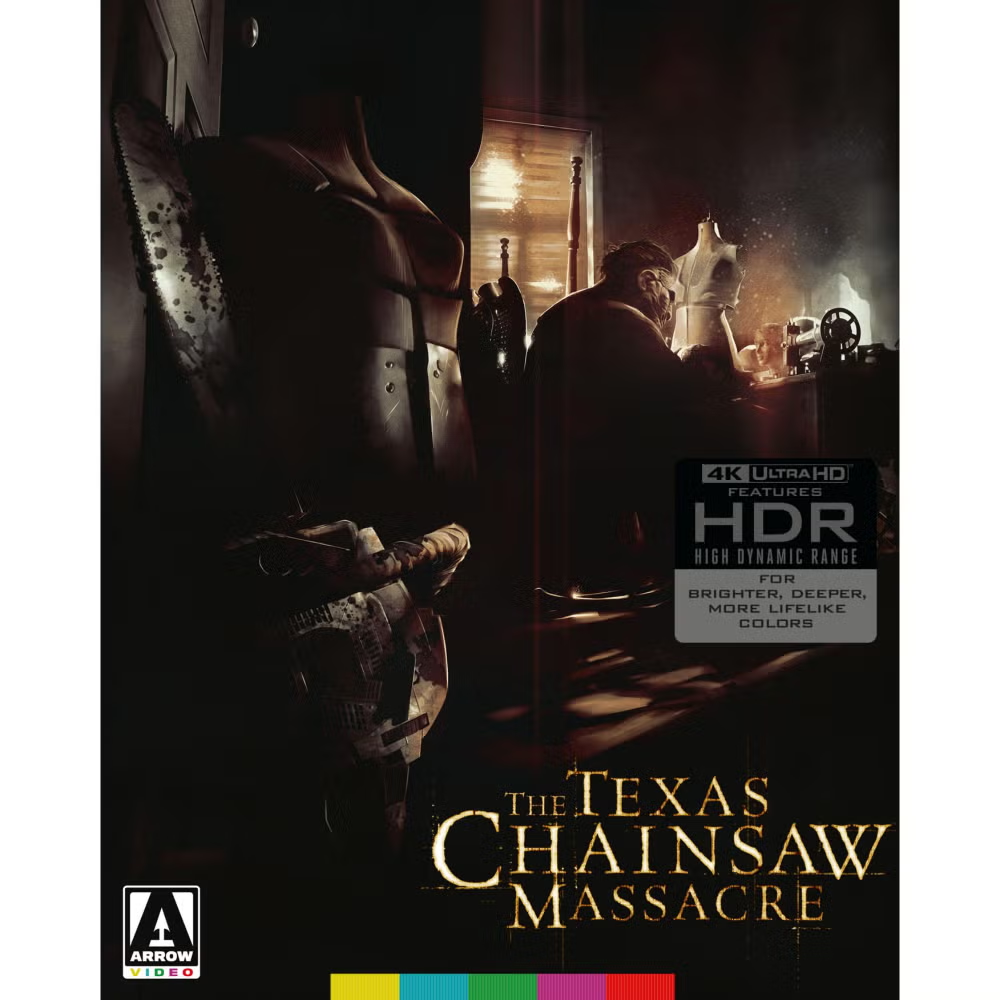
How to Enter:
Step 1. Make sure to FOLLOW US ON FACEBOOK AND JOIN OUR FACEBOOK GROUP!
Step 2. LIKE AND SHARE the giveaway post!
Step 3. This is the most important step, email us at contact@horrorpress.com with your FULL Facebook name (so we can verify you’re in the group) and who your favorite character is from the Texas Chainsaw franchise.
**Giveaway entries are limited to addresses in the United States.**
**All entries must be 18 or older to enter**
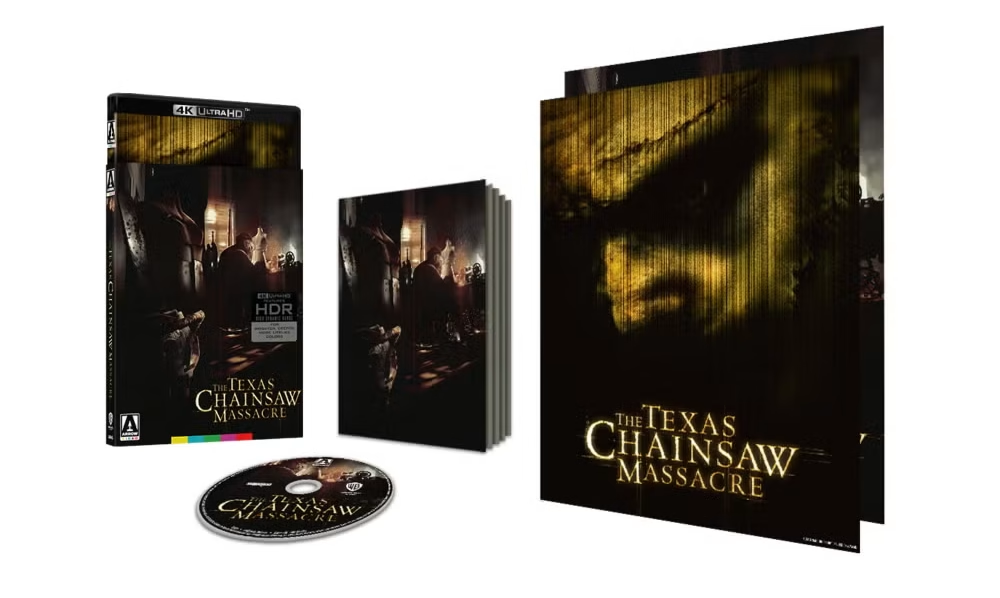
What You’ll Win
The Texas Chainsaw Massacre (2003) Limited Edition 4K UHD from Arrow Video
- 4K (2160p) Ultra HD Blu-ray presentation in Dolby Vision (HDR10 compatible)
- Original DTS-HD MA 7.1 and 5.1 surround audio and lossless stereo audio
- Optional English subtitles for the deaf and hard of hearing
- Brand new audio commentary with Dread Central co-founder Steve “Uncle Creepy” Barton and co-host of The Spooky Picture Show podcast Chris MacGibbon
- Archival audio commentary with director Marcus Nispel, producer Michael Bay, executive producers Brad Fuller and Andrew Form and New Line Cinema founder Robert Shaye
- Archival audio commentary with Marcus Nispel, director of photography Daniel Pearl, production designer Greg Blair, art director Scott Gallager, sound supervisor Trevor Jolly and composer Steve Jablonsky
- Archival audio commentary with Marcus Nispel, Michael Bay, writer Scott Kosar, Brad Fuller, Andrew Form and actors Jessica Biel, Erica Leerhsen, Eric Balfour Jonathan Tucker, Mike Vogel and Andrew Bryniarski
- Reimagining a Classic, a brand new interview with director Marcus Nispel
- Shadows of Yesteryear, a brand new interview with cinematographer Daniel Pearl
- The Lost Leatherface, a brand new interview with actor Brett Wagner
- Masks and Massacres, a brand new interview with makeup effects artist Scott Stoddard
- Chainsaw Symphony, a brand new interview with composer Steve Jablonsky
- Chainsaw Redux: Making A Massacre, a making-of documentary
- Ed Gein: The Ghoul of Plainfield, an in-depth look at the infamous killer who inspired the character of Leatherface
- Severed Parts, a look at the cutting room floor and some of the scenes excised from the final edit
- Deleted scenes including an alternate opening and ending
- Screen tests for Jessica Biel, Eric Balfour and Erica Leerhsen
- Behind-the-scenes featurette
- Cast and crew interviews
- Theatrical trailers and TV spots
- Concept art galleries
- Reversible sleeve featuring original and newly commissioned artwork by Aaron Lea
- Double-sided foldout poster featuring original and newly commissioned artwork by Aaron Lea
- Illustrated collector’s booklet featuring new writing on the film by Michael Gingold
Misc
NYCC 2025 Horror Highlights: A Sneak Peek at ‘The Lost Boys’ Musical, ‘Resident Evil: Requiem,’ and More!
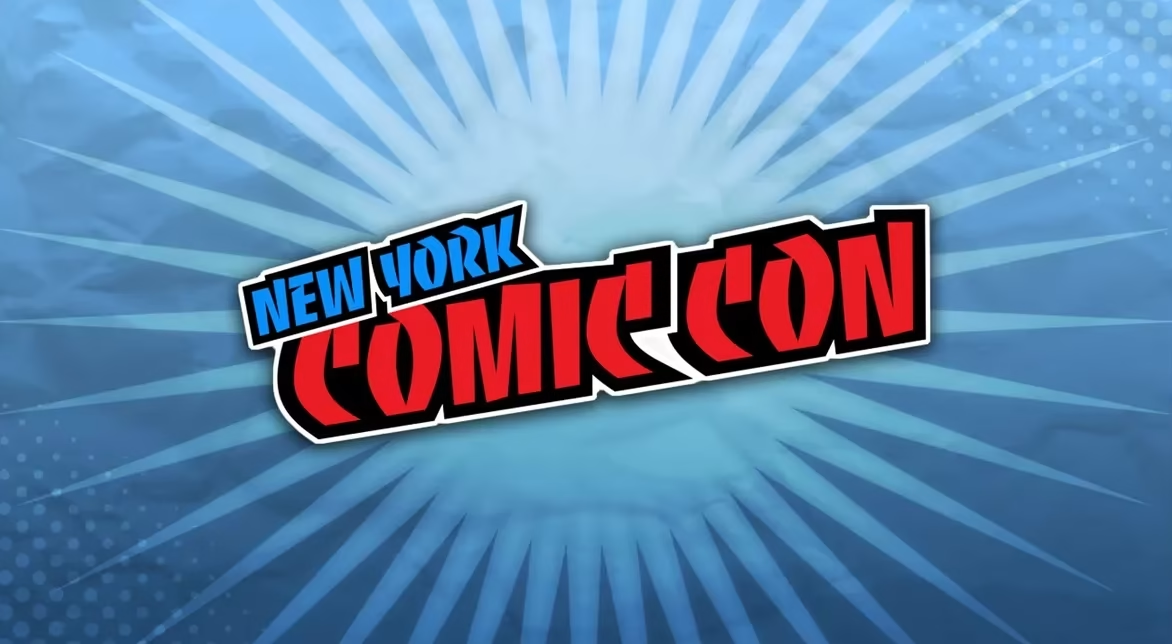
As soon as New York Comic Con announced that its 2025 theme would be “haunted,” I started lacing up my comfy shoes and making a beeline for the Javitz Center! Horror has always been represented at the con, but it felt fitting that it should play a central role in this year’s event at a time when the genre seems more popular than ever.
From beloved family-friendly properties like The Nightmare Before Christmas to pants-dampening titles like the upcoming Resident Evil: Requiem, horror appeared in countless shapes and forms. Here are all the best and scariest insights I gleaned from the show floor, panel rooms, and pop-ups of New York Comic Con 2025!
Our NYCC 2025 Horror Highlights
Resident Evil: Requiem Is Going to Test Your Bladder Strength
Full disclaimer: I’m not a gamer. I’m honestly pretty bad at games, which made my Resident Evil: Requiem play session all the more frightening because I was convinced that everyone around me would realize I’m a fraud. But with easy-to-grasp controls, even for a newb like me, the latest installment in the iconic horror franchise quickly sucked me in and left me on edge for entirely different reasons.
During my 30-minute session, I was introduced to FBI analyst Grace Ashcroft, Requiem’s central character. She swims to consciousness to find herself strapped upside down on a gurney with a needle in her arm, siphoning her blood. After Grace managed to free herself, the controls were handed over to me to explore the creepy facility through Grace’s eyes, looking for a fuse. Some spaces were bathed in red light; others were lit only by flickering bulbs that left me white-knuckling the controller, waiting for something to emerge from the shadows and swallow me whole, not helped by Grace’s anxious, stuttering breathing in my ear.
I took a moment to appreciate how detailed video games have become since my childhood experiences playing Evil Dead: Hail to the King on the original PlayStation (seriously, you can see the dust drifting in beams of light now?!), only for the sound of movement somewhere in the facility to yank me back to the present. I renewed my frantic search for the fuse, only to run blindly into a pitch-black room and encounter something enormous that dragged me into the darkness. Sorry, Grace!
You can find out what happens next when Resident Evil: Requiem releases for the PlayStation 5, Xbox Series X|S, PC, and Nintendo Switch 2 on February 27, 2026.
Megan Fox Is Among the New Cast Members in Five Nights at Freddy’s 2—And Blumhouse Hasn’t Given Up on Its Other m3gan Yet
Blumhouse made several announcements at their NYCC panel, most notably that Megan Fox (Jennifer’s Body) is voicing Toy Chica in director Emma Tammi’s highly anticipated sequel Five Nights at Freddy’s 2, coming to theaters on December 5. Other new additions to the cast include YouTuber Matthew Patrick, aka MatPat, who cameoed in the first movie and will voice Toy Bonnie, and Kellen Goff, who has voiced multiple characters in the game series and will now lend his pipes to Toy Freddy.
I’m interested in Five Nights at Freddy’s 2, not least because my best friend is terrified of the franchise and makes a wildly entertaining moviegoing companion—but I’m more interested in the future of another Blumhouse franchise, M3GAN. After the sequel underperformed, likely due in part to its hard genre pivot away from horror and into action territory, the future of the killer doll is uncertain. But in a special industry presentation on “The Business of Fear,” Jason Blum revealed that “we’re all working to keep M3GAN alive,” adding that Blumhouse is exploring other potential mediums before trying to resurrect her on film.
Does that mean a M3GAN video game might come our way in the future, or perhaps a TV series? I don’t know, but I have a feeling this isn’t the last we’ve seen of the silicone diva.
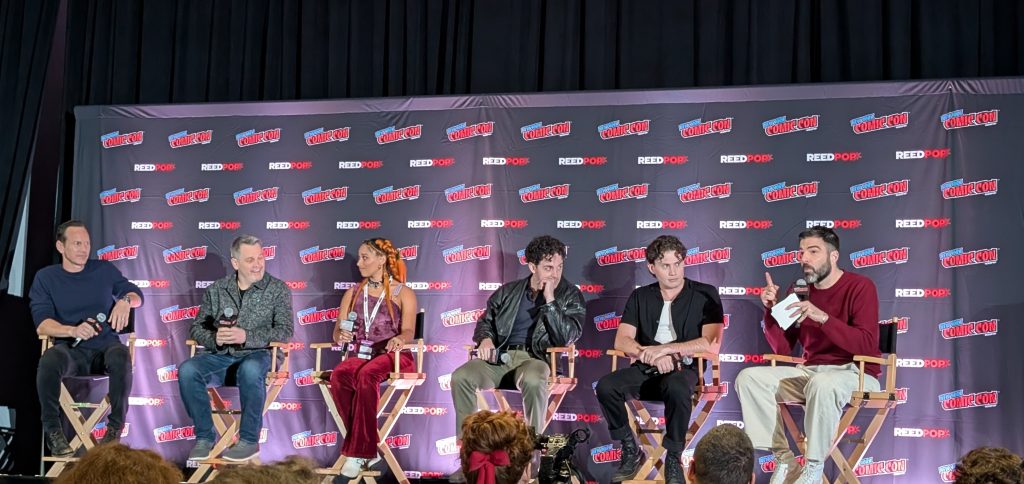
Photo taken by Samantha McLaren.
The Lost Boys: A New Musical Will Feature Flying Stunts and a Live Vampire Band
My queer heart is a sucker for musical adaptations of horror films I love, so you can be certain that I’ll be heading down to the Santa Carla Boulevard—aka Broadway’s Palace Theater—for The Lost Boys: A New Musical, which begins previews on March 27, 2026. At their NYCC panel, producer Patrick Wilson (The Conjuring franchise), director Michael Arden (Maybe Happy Ending), and cast members LJ Benet, Ali Louis Bourzgui, and Maria Wirries revealed why they feel Joel Schumacher’s 1987 classic translates so well to the stage, and what audiences can look forward to.
“There’s something that I see with both horror movies, musicals, and superhero movies—there’s an element of melodrama that’s really rewarding,” says Wilson, who began his career in musical theater and worked with Schumacher on the director’s 2004 film adaptation of The Phantom of the Opera. “Some people view it as camp, but there’s a reality of it being heightened that felt like this story cemented itself so much to being a musical.”
“They’re a biker gang, after all, and there’s a level of theatricality to that in and of itself,” says Arden. “Our biker gang also happens to play instruments.”
That’s right: the vampires will be playing instruments live on stage, which made casting twice as hard. Ali Louis Bourzgui, who plays David, the character portrayed by Kiefer Sutherland in the film, reveals that he plays guitar. And that wasn’t the only unusual request in the casting call: auditions included a flying test. (Presumably wires were involved, unless Arden has found himself a real cabal of vampires in his cast.)
Other highlights that fans can look forward to include killer music from one of Arden’s favorite bands, The Rescues. You can listen to the song “Have to Have You” right now, featuring instrumentals from Slash. The director also teases that many fan-favorite moments from the film will feature in some way in the musical, including the bridge scene and, yes, even the sexy saxophone guy.
Greg Nicotero’s Guts & Glory Marks a New Challenge for a Legend of the Business
If you like looking at gnarly practical effects in horror movies, chances are you’re familiar with Greg Nicotero’s work, whether you realize it or not. The legendary SFX artist has worked on everything from George Romero’s Day of the Dead and Sam Raimi’s Evil Dead II to Kill Bill and, more recently, The Walking Dead. The impressive extent of his resume was made clear at the panel “Shudder is Here to Scare the S*** Out of You,” in which almost any film mentioned by the other panelists was met by a small smile and a humble murmur of “worked on that” into the mic, often followed by a wild anecdote. Nicotero seems like the most interesting man in the world to grab a drink with, and his new horror competition show for Shudder—Guts & Glory—will let us see more of the man behind the makeup brush.
“Guts & Glory is one of the most fun times I’ve had on a show,” Nicotero says, teasing that the series is “part Sam Raimi, part Halloween Horror Nights, and part Survivor.”
In the six-episode first season, contestants are dropped into an Alabama swamp, where there’s an urban legend about an evil spirit. “One of the contestants gets possessed by the evil spirit, people start dying off, but in the meantime, they’re still competing and there’s a prize,” Nicotero explains.
Guts & Glory is effects-heavy, which was challenging to do in an unscripted series relying on real people’s real-time reactions. “You do a movie, you can cut and try it again,” Nicotero explains. “[This] was completely out of my wheelhouse and out of my comfort zone, but I’m really, really proud of it.”
Nicotero’s Creepshow was one of the first original shows to debut on Shudder, so he’s truly part of the DNA of the horror streamer, which celebrated its 10th anniversary this year. Guts & Glory premieres on October 14 as part of Shudder’s Season of Screams programming.
Horror Short The Littles Deserves the Big-Screen Feature Treatment
Some short films are perfectly suited to their bite-sized format, while others contain the seeds of something much bigger. At the New York Premiere of The Littles, a new short written and directed by American Horror Story producer Andrew Duplessie, I could immediately see the potential for the feature film that Duplessie hopes to make.
Equal parts charming and unsettling, The Littles stars M3GAN’s Violet McGraw as a little girl with a loose floorboard in her bedroom. One night, a scuffling sound and a crack of light between the boards lead the little girl to discover that her family isn’t alone in the house…
Duplessie says The Littles was inspired by his own experiences growing up in a creaky old house with a no-doubt overactive imagination. The short features creepy-cute stop-motion animation from Anthony Scott (The Nightmare Before Christmas), puppets by Katy Strutz (Guillermo del Toro’s Pinocchio), and some truly adorable miniature sets by Aiden Creates, all blended perfectly with the live-action scenes. Check it out if it’s playing at a festival near you, and watch this space for a (fingers-crossed) future feature!
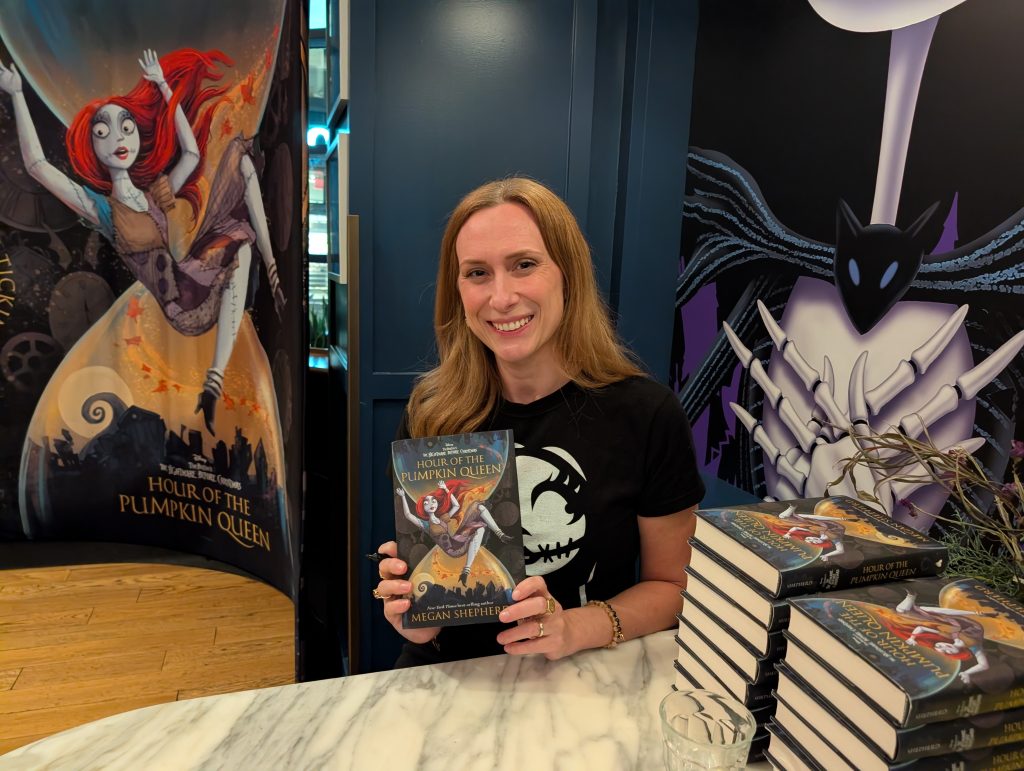
Photo taken by Samantha McLaren.
Disney Publishing’s New The Nightmare Before Christmas Tie-in Novel Welcomes Younger Fans into the Scary Fun
NYCC’s horror happenings weren’t all geared toward an adult audience. Disney Publishing took over Daily Provisions Manhattan West for a pop-up experience inspired by The Nightmare Before Christmas, featuring themed food and drinks like a delectable Pumpkin Potion coffee that I could honestly drink all season long.
At a media and creator event in the space, I took a look at the newly released Hour of the Pumpkin Queen from New York Times best-selling author Megan Shepherd, who also wrote the official novelization of The Nightmare Before Christmas for the film’s 30th anniversary in 2023. In this new tie-in novel, Sally and her rag doll apprentice, Luna, embark on a time-bending adventure to save Jack Skellington and Halloween Town after falling through a mysterious portal.
I was gifted a copy of the book by Disney, but all opinions are my own here. I’m looking forward to giving it a read during the inevitable Halloween hangover that takes place in November, before likely passing it on to my young nieces when they’re old enough. It’s a full novel, not a picture book, so definitely geared more toward a YA audience, but between the beautiful artwork on the cover and the seasonal theme, it might just be the perfect gift for the budding horror lover in your life.
That’s a wrap on New York Comic Con 2025! Be sure to bookmark Horror Press if you haven’t already so you never miss our coverage of conventions, festivals, and more.


























